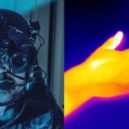DO MURDERERS HAVE MURDER GENES?

Bradley Waldroup lived in a camper home in the cliffs of Tennessee. On October 16, 2006, when the police responded to a call and strode into his home, the entire place looked like a battlefield. There was blood every place, there was blood on the carpet, on the walls, even on the Bible Waldroup had been reading. Just some time ago, Waldroup who had been drinking had picked up a fuss with his estranged wife who had come there for the weekend accompanied by their four kids and her friend Leslie Bradshaw. Midway into the argument, Waldroup had lost his cool, and pumped eight bullets into Bradshaw and smashed her head open with a sharp implement. Having finished with her, he hounded his wife, Penny, with a machete chopping her finger and cutting her repeatedly. After the police investigation, the prosecutors indicted Waldroup with the felony murder of Bradshaw, which is punishable with the death penalty, and attempted first-degree murder of his wife as the police were convinced that Waldroup’s actions had been willful, and deliberate. During the trial, Waldroup conceded that he had killed Leslie Bradshaw and attacked his wife. A death sentence looked inevitable. However, as the trial progressed, the jury was beseeched to examine genetic evidence in the case against Bradley Waldroup. A forensic psychiatrist who analysed the evidence swore that Waldroup carried a criminal gene linked with violence. After 11 hours of deliberation, the jury sentenced Waldroup of voluntary manslaughter, not murder, and only attempted second-degree murder. The ruling left Prosecutor Drew Robinson stunned and speechless.
 In 2007, Abdelmalek Bayout, an Algerian citizen who had lived in Italy since 1993, acknowledged to stabbing and slaying Walter Felipe Novoa Perez. Bayout confessed that he had killed Perez as he had humiliated him over the eye makeup he was sporting for religious reasons. During the trial, Bayout’s lawyer pleaded the court to take into account the fact that her client might have been mentally ill at the time of the murder. The court after decreeing and evaluating three scientific reports handed him a sentence of 9 years and two months that was three years less than the sentence he would have received if there was no predisposition to violent behaviour.
In 2007, Abdelmalek Bayout, an Algerian citizen who had lived in Italy since 1993, acknowledged to stabbing and slaying Walter Felipe Novoa Perez. Bayout confessed that he had killed Perez as he had humiliated him over the eye makeup he was sporting for religious reasons. During the trial, Bayout’s lawyer pleaded the court to take into account the fact that her client might have been mentally ill at the time of the murder. The court after decreeing and evaluating three scientific reports handed him a sentence of 9 years and two months that was three years less than the sentence he would have received if there was no predisposition to violent behaviour.
Following an appeal shortly after, there was a curtailment of penalty of Bayout by one more year as two molecular neuroscientists after a series of tests had found abnormalities in brain-imaging scans and in five genes that correlate to violent behaviour — including the gene encoding the neurotransmitter-metabolising enzyme monoamine oxidase A. Delivering his verdict, Judge Reinotti proclaimed openly that he had found the MAOA evidence incredibly compelling.
Likewise, police in the Netherlands had indicted a young woman of choking her four newborns after their births by smothering their nose and mouth with a pillow. After which she put the corpses into a suitcase and left them in the attic at the basement of her parents’ house. Initially, the court presumed that the woman had murdered her babies as the babies were illegitimate. In the first instance, the court imposed a prison sentence of 12 years because of infanticide: three times murder and once manslaughter of the four newborn children. Further, when they took the case to the Court of Appeal, the court agreed to the plea of defence of subjecting the accused to an examination by a psychiatrist, a psychologist and a behavioural neurologist. At which time, it became established that the defendant had a personality disorder, and therefore, there was an existence of diminished guilt on the part of the defendant, for the crimes. Taking into account the expert reports, the Court of Appeal, in contrast to the first instance court, determined that as evidence was lacking, it was appropriate to drastically reduce the sentence to just four times manslaughter with mandatory hospitalisation and a prison sentence for three years.
But the case of Stephen Mobley preceded the cases mentioned above. Mobley came from a prosperous white middle-class American family. There is no way anyone could have blamed his upbringing. But as he grew up, he became increasingly violent. After attaining the age of 25, he strolled into a pizza store drew his gun and casually shot the manager of the store in the neck sarcastically joking that he would apply for the job vacancy after the man is, dead. In 1994, Stephen Mobley confessed to the cold-blooded murder and became the first to submit genetic evidence in a court of law in Atlanta, Georgia. Mobley’s family tree had shown four generations of violence; his attorneys contended that the crime was associated with his genetic make-up. The court dismissed the claim. But the act of introducing genetic defence into the courtroom had occurred for the first time in the annals of justice.
The basis of Mobley’s defence was the discovery of a “criminal gene” in a Dutch family. A sizeable Dutch family which was living across different regions of Netherlands realised that for 35 years most of the men had been aggressive and prone to violent, instinctive acts such as arson, murder attempts and rape. Wanting to know if there were any genetic reasons behind it, the women in the family had approached Han Brunner of the Institute of Genetics in Nijmegen, to examine the likelihood of a genetic predisposition towards violent behaviour. Brunner surprisingly discovered that a single gene in the family that was being passed by women and expressed in men was responsible for the family’s violent behaviour.
Since 1994 Stephen Mobley’s lawsuit where the defence wanted to evaluate his client for MAOA deficiency lawyers world over have increasingly been striving to bring genetic evidence such as MAOA deficiency into courtrooms. There are reports that in the last few years there have been over 200 cases in the USA alone where lawyers have attempted genetic evidence to support the fact that genes predisposed their clients to violent behaviour, drug or alcohol abuse.
There exist several forms of crime such as murder, rape, theft, burglary, cheating, arson etc.which individuals with the criminal genes may commit but what all of them have in common is an innate immunity to perceive and a considerable craving to act on an impulse. The real task, therefore, is to find the gene that encourages risk-taking than look for a gene that controls arson or murder.
Scientists have identified two criminal genes, which predisposes individuals to violent behaviour. One of them is the MAOA gene, which codes for the enzyme monoamine oxidase A, which is essential for regulating the amount of dopamine and serotonin in the brain. The other gene is a variant of cadherin 13 or CDH13 gene that researchers attribute with substance abuse and ADHD. Researchers have also linked this gene to impulse control in violent offenders.
It’s not just that the biological traits like colour of hair, eyes, tallness and diseases are inheritable, the aggression gene is also inheritable. We now also have a gay gene and a maternal gene that confers maternal behaviour. Female mice deficient in this gene don’t take care of their offspring and abandon their babies for dead.
Genes, besides determining the physical traits, also governs behaviour. Behaviour to the extent between 20 to 70 percent is inheritable, but a genetic factor singly cannot account for a particular behaviour. Asians have genes that do not produce adequate levels of an enzyme called alcohol dehydrogenase. The westerners who lack this protective mechanism are therefore extremely vulnerable to alcoholism. Researchers have associated a single dopamine receptor DRD with alcoholism. Similarly, levels of MAO-A have played a role in suicide and criminal behaviour.
But the biological root of behaviour is expressed through an individual’s environment. Children born to parents who are Olympic athletes may not become Olympic athletes if we do not put them on proper training, just as children born to parents of high IQ may have low IQ if we do not give them an adequate education. A research study called the” Dunedin Study” in New Zealand took into consideration maltreatment in childhood, which is a known environment factor and a genetic factor, MAOA gene expression. Researchers found a higher incidence of violent behaviour in men with the MAOA gene who had suffered maltreatment in their childhood. These men, who comprised 12 percent of the group were responsible for 44 percent convictions. A total of 85% of those with the genetic and environmental indicators developed some type of criminal behaviour.
Tamil Nadu witnesses some of the most gruesome murders which involves inflicting multiple cut injuries with a machete which people colloquially call “aruval”. The barbarity with which the rowdy gang’s murder each other is mind-blowing. There has been no study to date to uncover the involvement of criminal genes in such brutal killings. Today, we have high-speed genome sequencing using which it would be possible to see if criminal genes are predisposing them to such ferocious murders. If such genes exist, then we could screen such individuals to give criminal prophylaxis: a treatment regimen adapted to their genetic and environmental situations. This would involve a combination of medications and counselling planned to prevent stimuli and to sustain their equilibrium by not turning on the criminal genes. Genes code for proteins which produce neurotransmitters such as dopamine and serotonin, the levels of which determine people’s moods and behaviours so supplementing individuals with desirable neurotransmitters would reduce violence and elicit beneficial behaviour. I am told that such a program called the Federal Violence Initiative exists in the USA.
The notion that crime, genetics and race might be correlated has particularly infuriated both proponents and opponents of “genetic determinism,” There is a great deal of concern that such cases could lead to genetic determinism. An idea that genes determine the behaviour of an individual. Should a court give males a shorter sentence because they possess a Y chromosome and perpetrate 90 percent of all murders? Is the Y chromosome which only the males possess liable for the murder? Similarly, skin colour is a genetic trait; more blacks end up in jails than whites. Then does that mean more black people engage in crimes because of their genes?
A book called “The Bell Curve” written by two right wing scientists Richard Hernstein and Charles Murray contends that IQ has a genetic basis which accounts for innate differences between IQs of the races. Low IQ people, the book says, are more prone to perpetrate crimes because they lack foresight and cannot understand that stealing from someone is immoral.
Going by the contentions and judgements mentioned above, we seem to be strolling towards a genetics-based criminal law system. Indirect genetic connections between crime and circumstances such as alcoholism and antisocial behaviours are being created, and genetic justifications are being extended to exonerate the accused at trial. The new system would divert the focus from liability based on an individual’s mental state to a genetic, physiological frontage. Genes would play a more significant role in deducing the predispositions of behaviour and the scope of criminal responsibility. For instance, we might end up expecting individuals with “aggressive genes” to act violently and consequently deal with them differently and leniently than those who do not have such genetic anomalies. We could end up submitting genetics as a defence against criminal charges and use genetic data as a tool to forecast the future violent behaviour of an accused. Eventually, genetics would evolve into an exculpatory component in convicting decisions and gene therapy would become a possibility in the rehabilitation of convicted criminals.
Finally, just as how we have genes in our genome for physical traits like eye colour, height, hair colour etc and behavioural traits such as altruism, conscientiousness etc. we could also have spiritual genes in our DNA. Teilhard de Chardin, a French priest, said, “ We are not human beings having a spiritual experience; rather, we are spiritual beings having a human experience”. If so could it be that the 98 percent of the DNA that we have that is believed to be non-functional or non-coding be associated with our spiritual nature?
Source from: epaper/deccanchronicle/chennai/dt:02.12.2019
 Dr.K. Jayanth Murali is an IPS Officer belonging to 1991 batch. He is borne on Tamil Nadu cadre. He lives with his family in Chennai, India. He is currently serving the Government of Tamil Nadu as Additional Director General of Police, Law and Order.
Dr.K. Jayanth Murali is an IPS Officer belonging to 1991 batch. He is borne on Tamil Nadu cadre. He lives with his family in Chennai, India. He is currently serving the Government of Tamil Nadu as Additional Director General of Police, Law and Order.


